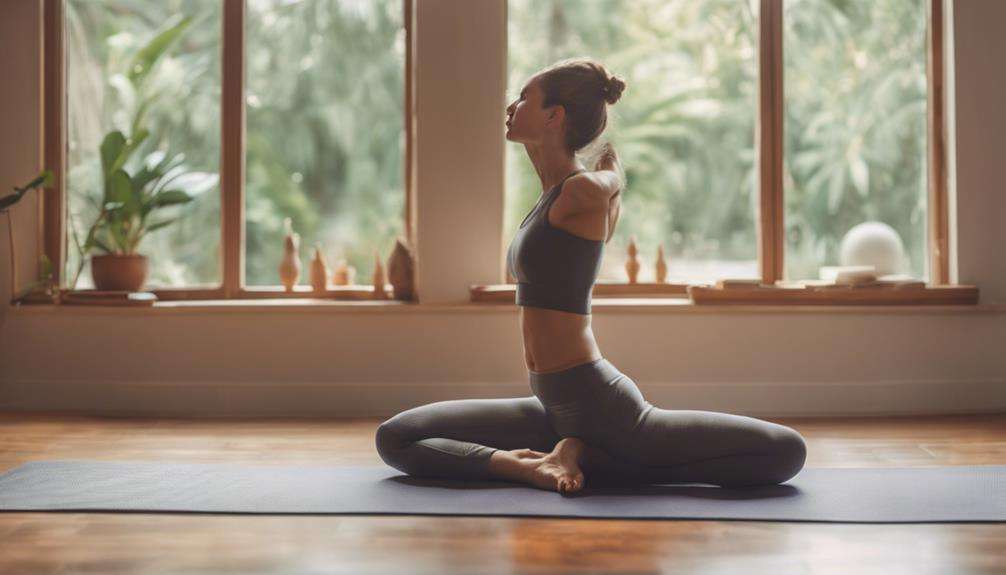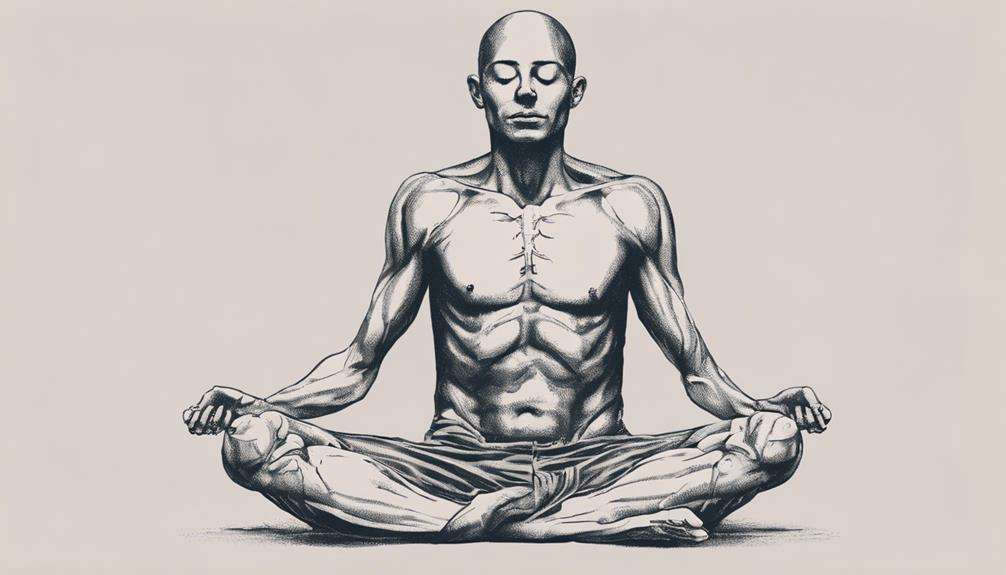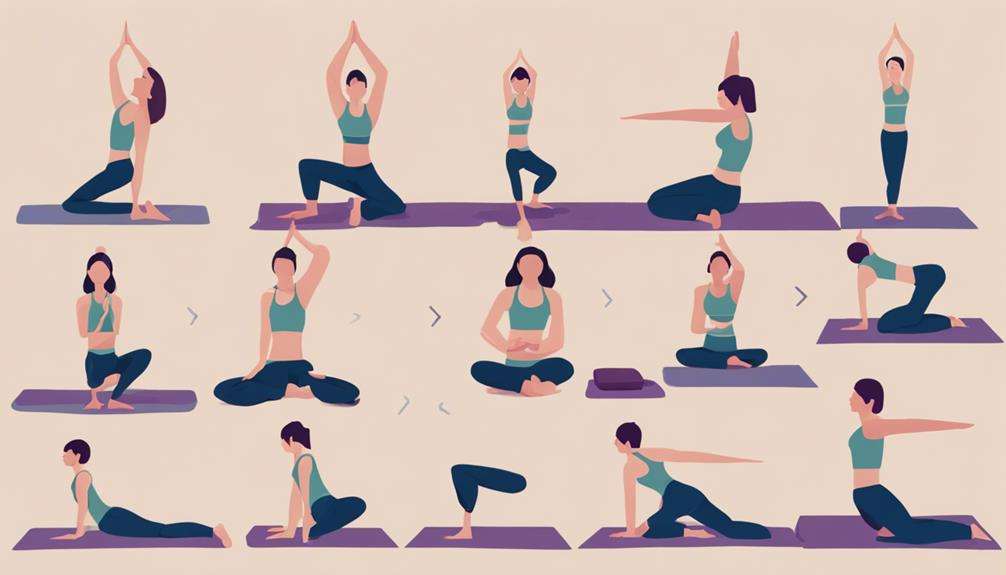Imagine feeling overwhelmed by work deadlines and daily stresses, finding it hard to catch your breath and relax.
With simple meditation techniques, you can learn to harness the power of your breath to cultivate a sense of calm and focus.
By exploring mindfulness practices and incorporating them into your routine, you can discover the potential for improved well-being and inner peace.
The key lies in mastering the art of breathing better through meditation – a gateway to a more balanced and harmonious life.
Key Takeaways
- Practice mindful breathing techniques daily for improved wellness.
- Incorporate meditation for calmness and reduced stress.
- Use yoga poses and pranayama for better respiratory health.
- Enhance overall well-being through focused breathing practices.
Mindful Breathing Techniques
Engage in mindful breathing techniques to center yourself in the present moment and foster a sense of calm and well-being in your daily life. Mindful breathing, a core component of meditation and breathwork practices, offers numerous benefits such as reducing stress, anxiety, and promoting relaxation. By focusing on your breath, you can improve mental clarity, emotional well-being, and overall mindfulness. Regular practice of mindful breathing not only enhances concentration and focus but also contributes greatly to your overall wellness.
Mindful breathing involves paying attention to the rhythm and depth of your breath, allowing yourself to let go of distractions and worries. This intentional focus on breathing helps regulate the nervous system, leading to a state of calmness and tranquility. Through mindful breathing, you can train your mind to stay present and cultivate a deeper connection with yourself. Incorporating mindful breathing techniques into your daily routine can be a powerful tool for managing stress, anxiety, and improving your overall quality of life.
Meditation Practices for Respiratory Health
Improving your respiratory health through meditation practices involves techniques like diaphragmatic breathing to strengthen the diaphragm muscle. Diaphragmatic breathing, also known as deep breathing, focuses on expanding the belly when inhaling and contracting it when exhaling. This method helps in increasing lung capacity and oxygen intake, which are essential for best respiratory function.
Additionally, meditation plays a vital role in reducing stress and anxiety, which can lead to tension in the chest and hinder breathing. By incorporating deep breathing exercises into your meditation routine, you can stimulate relaxation responses that aid in managing asthma symptoms and improving overall respiratory conditions.
Consistent practice of breathwork meditation can enhance breath control, promoting better respiratory health and overall well-being. Make deep breathing a part of your daily meditation practice to experience the benefits of a relaxed and efficient respiratory system.
Yoga Poses for Better Breathing

To enhance your respiratory health further, consider incorporating specific yoga poses that focus on improving lung capacity and breathing efficiency. Cobra Pose (Bhujangasana) and Bridge Pose (Setu Bandhasana) are beneficial for enhancing lung capacity. Shoulder Stand (Sarvangasana) and Fish Pose (Matsyasana) help expand the chest and improve breathing control.
Poses like Extended Triangle Pose (Utthita Trikonasana) and Warrior Pose (Virabhadrasana) promote deep breathing by opening up the chest and ribcage. Incorporating Pranayama techniques such as Kapalabhati (Skull Shining Breath) and Anulom Vilom (Alternate Nostril Breathing) during yoga practice can enhance respiratory function.
Regular practice of these poses focusing on alignment, expansion, and relaxation can lead to improved breathing habits and overall lung health. By incorporating these yoga poses and breathing techniques into your routine, you can optimize your respiratory function and promote better lung health.
Frequently Asked Questions
What Is the Three Breath Technique?
Take three deep breaths with the Three Breath Technique for deep relaxation, stress relief, mental clarity, energy boost, improved focus, calm mind, emotional balance, enhanced concentration, inner peace, and overall well-being. Reset and center yourself instantly.
What Is the 3 3 3 Breathing Technique?
Take control of stress with the 3 3 3 breathing technique. Inhale for 3, hold, then exhale for 3. Enhance focus, calm your mind, reduce anxiety. A simple relaxation method for your wellness practice, promoting a strong mind-body connection through mindful breathing.
What Is 5 3 3 Breathwork?
Incorporating 5 3 3 breathwork into your routine enhances relaxation, focus, and mental clarity. Breathe in deeply for 5 seconds, hold for 3, and exhale slowly for 3. This technique boosts energy, balances emotions, and fosters inner peace.
What Are 3 Examples of What Mindful Breathing Can Do for the Body?
Breathing mindfully can work wonders for you. It reduces stress, enhances heart health, and aids in pain management. Boosting mental clarity and immune support, it's your go-to for energy, focus, and better sleep. Try it out!
Conclusion
So, next time you're feeling a little stressed or overwhelmed, why not take a moment to practice some mindful breathing techniques?
It's a simple way to relax, clear your mind, and improve your overall well-being.
Give it a try and see how it can make a difference in your day-to-day life.
Happy breathing!






